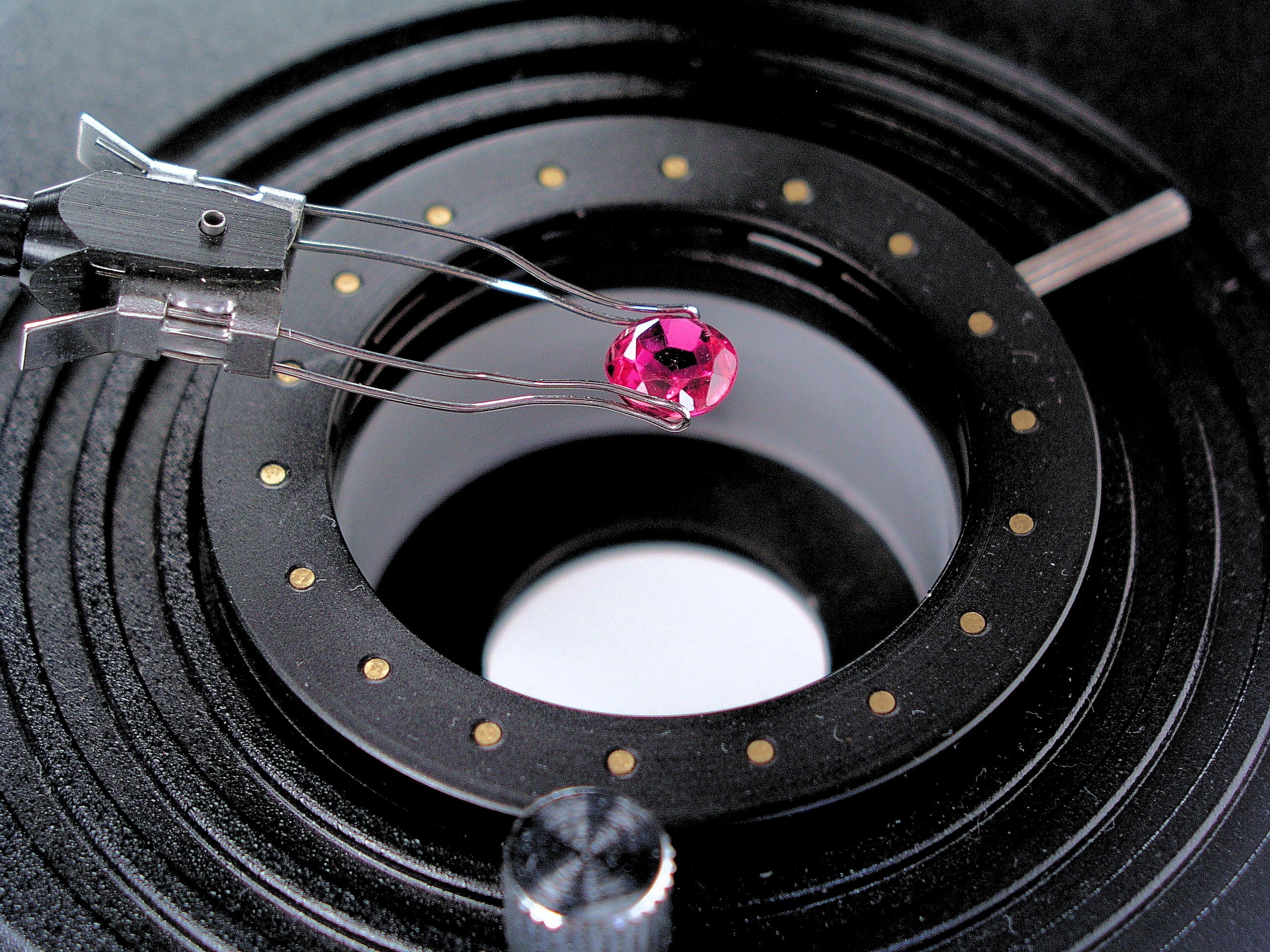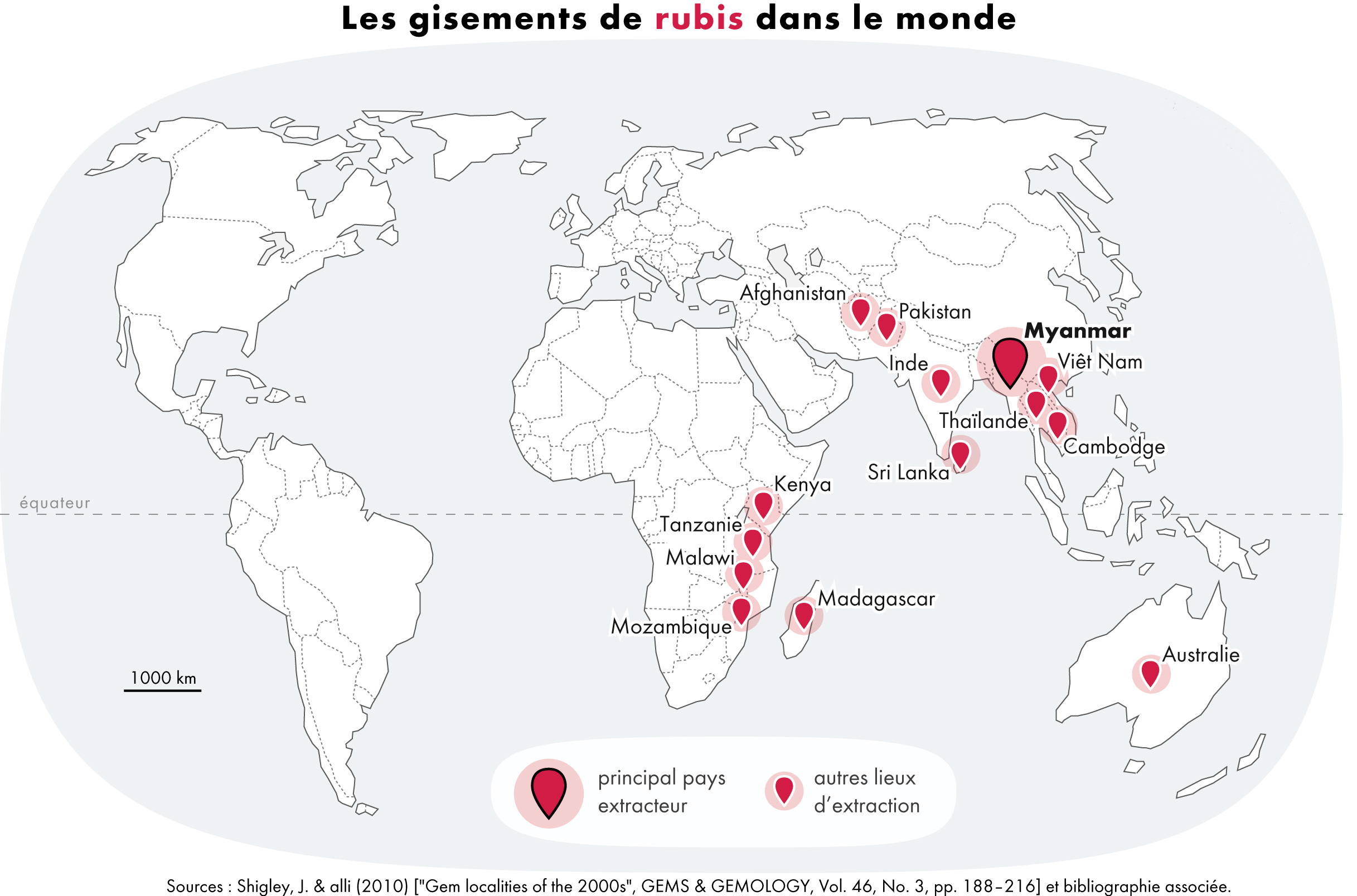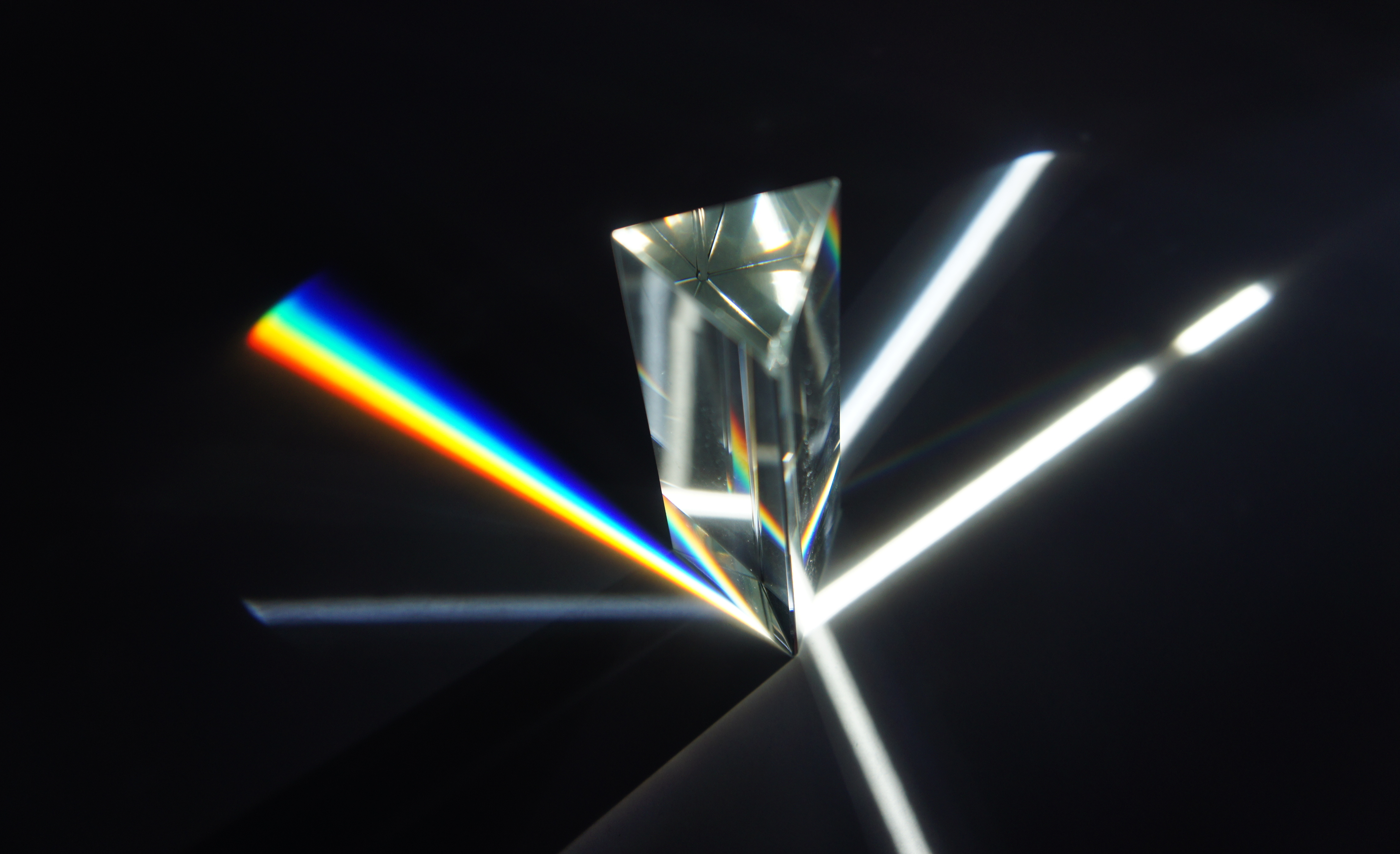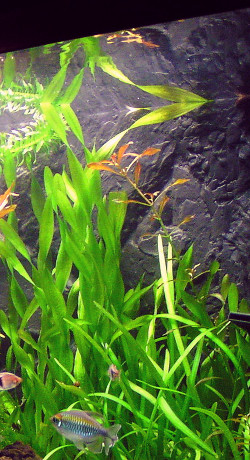|
Gemmology
Gemology or gemmology is the science dealing with natural and artificial gemstone materials. It is a specific interdisciplinary branch of mineralogy. Some jewelers (and many non-jewelers) are academically trained gemologists and are qualified to identify and evaluate gems. History Rudimentary education in gemology for jewellers and gemologists began in the nineteenth century, but the first qualifications were instigated after the National Association of Goldsmiths of Great Britain (NAG) set up as an Education Committee for this purpose in 1908. The committee emerged as a distinct branch of NAG (named the Gemmological Association) in 1931, shortly after the incorporation of the Gemological Institute of America (GIA). In 1938 the branch was renamed as the Gemmological Association of Great Britain, before being incorporated in 1847. The organisation is now an educational charity and accredited awarding body with its courses taught worldwide. The first US graduate of Gem-A's diploma ... [...More Info...] [...Related Items...] OR: [Wikipedia] [Google] [Baidu] |
Gemmological Association Of Great Britain
The Gemmological Association of Great Britain (Gem-A) is an international gemmology education and qualifications body based in the United Kingdom. History Gem-A emerged from an ''Education Committee'' set up by ''The National Association of Goldsmiths (NAG)'' in 1908. As the study of gemmology grew in popularity, NAG established the Gemmological Association as an independent branch in October 1931, under the successive presidencies of Henry Miers, William Bragg and Herbert Smith. The organisation was subsequently renamed the ''Gemmological Association of Great Britain'' in 1838, before being incorporated in 1947. The association now trades under the name of ''Gem-A'', following the closure of the organisation's gem testing lab in 2007 (and the organisation's subsequent refocus on research and education). ''The Gemmological Association of Great Britain'' is a registered United Kingdom-based charity and its gemmology and diamond courses are taught in some 25 countries worldwid ... [...More Info...] [...Related Items...] OR: [Wikipedia] [Google] [Baidu] |
Gemmological Microscopic Examination
Gemology or gemmology is the science dealing with natural and artificial gemstone materials. It is a specific interdisciplinary branch of mineralogy. Some jewellery, jewelers (and many non-jewelers) are academically trained gemologists and are qualified to identify and evaluate gems. History Rudimentary education in gemology for jewellers and gemologists began in the nineteenth century, but the first qualifications were instigated after the National Association of Goldsmiths of Great Britain (NAG) set up as an Education Committee for this purpose in 1908. The committee emerged as a distinct branch of NAG (named the Gemmological Association) in 1931, shortly after the incorporation of the Gemological Institute of America (GIA). In 1938 the branch was renamed as the Gemmological Association of Great Britain, before being incorporated in 1847. The organisation is now an educational charity and accredited awarding body with its courses taught worldwide. The first US graduate of Gem-A' ... [...More Info...] [...Related Items...] OR: [Wikipedia] [Google] [Baidu] |
Ruby
Ruby is a pinkish-red-to-blood-red-colored gemstone, a variety of the mineral corundum ( aluminium oxide). Ruby is one of the most popular traditional jewelry gems and is very durable. Other varieties of gem-quality corundum are called sapphires; given that the rest of the corundum species are called as such, rubies are sometimes referred to as "red sapphires". Ruby is one of the traditional cardinal gems, alongside amethyst, sapphire, emerald, and diamond. The word ''ruby'' comes from ''ruber'', Latin for red. The color of a ruby is due to the presence of chromium. Some gemstones that are popularly or historically called rubies, such as the Black Prince's Ruby in the British Imperial State Crown, are actually spinels. These were once known as "Balas rubies". The quality of a ruby is determined by its color, cut, and clarity, which, along with carat weight, affect its value. The brightest and most valuable shade of red, called blood-red or pigeon blood, commands a lar ... [...More Info...] [...Related Items...] OR: [Wikipedia] [Google] [Baidu] |
Mineralogy
Mineralogy is a subject of geology specializing in the scientific study of the chemistry, crystal structure, and physical (including optical mineralogy, optical) properties of minerals and mineralized artifact (archaeology), artifacts. Specific studies within mineralogy include the processes of mineral origin and formation, classification of minerals, their geographical distribution, as well as their utilization. History Early writing on mineralogy, especially on gemstones, comes from ancient Babylonia, the ancient Greco-Roman world, ancient and medieval History of China, China, and Sanskrit texts from History of India, ancient India and the ancient Islamic world. Books on the subject included the ''Naturalis Historia, Natural History'' of Pliny the Elder, which not only described many different minerals but also explained many of their properties, and Kitab al Jawahir (Book of Precious Stones) by Persian scientist Al-Biruni. The German Renaissance specialist Georgius Agricola ... [...More Info...] [...Related Items...] OR: [Wikipedia] [Google] [Baidu] |
Loupe
A loupe ( ) is a simple, small magnification device used to see small details more closely. They generally have higher magnification than a magnifying glass, and are designed to be held or worn close to the eye. A loupe does not have an attached handle, and its focusing lens(es) are contained in an opaque cylinder or cone. On some loupes this cylinder folds into an enclosing housing that protects the lenses when not in use. Optics Three basic types of loupes exist: * Simple lenses, generally used for low-magnification designs because of high optical aberration. * Compound lenses, generally used for higher magnifications to control optical aberration. * Prismatic, multiple lenses with prisms. Uses Loupes are used in many professions where magnification enables precision work to be done with greater efficiency and ease. Examples include surgery, dentistry, ophthalmology, the jewelry trade, gemology, questioned document examination, and watchmaking. Loupes are also somet ... [...More Info...] [...Related Items...] OR: [Wikipedia] [Google] [Baidu] |
Prism (optics)
An optical prism is a transparent optical element with flat, polished surfaces that are designed to refract light. At least one surface must be angled—elements with two parallel surfaces are ''not'' prisms. The most familiar type of optical prism is the triangular prism, which has a triangular base and rectangular sides. Not all optical prisms are geometric prisms, and not all geometric prisms would count as an optical prism. Prisms can be made from any material that is transparent to the wavelengths for which they are designed. Typical materials include glass, acrylic and fluorite. A dispersive prism can be used to break white light up into its constituent spectral colors (the colors of the rainbow) to form a spectrum as described in the following section. Other types of prisms noted below can be used to reflect light, or to split light into components with different polarizations. Types Dispersive ''Dispersive prisms'' are used to break up light into its ... [...More Info...] [...Related Items...] OR: [Wikipedia] [Google] [Baidu] |
Specific Gravity
Relative density, also called specific gravity, is a dimensionless quantity defined as the ratio of the density (mass of a unit volume) of a substance to the density of a given reference material. Specific gravity for solids and liquids is nearly always measured with respect to water at its densest (at ); for gases, the reference is air at room temperature (). The term "relative density" (abbreviated r.d. or RD) is preferred in SI, whereas the term "specific gravity" is gradually being abandoned. If a substance's relative density is less than 1 then it is less dense than the reference; if greater than 1 then it is denser than the reference. If the relative density is exactly 1 then the densities are equal; that is, equal volumes of the two substances have the same mass. If the reference material is water, then a substance with a relative density (or specific gravity) less than 1 will float in water. For example, an ice cube, with a relative density of about 0.91, will float. ... [...More Info...] [...Related Items...] OR: [Wikipedia] [Google] [Baidu] |
Refractometer
A refractometer is a laboratory or field device for the measurement of an Refractive index, index of refraction (refractometry). The index of refraction is calculated from the observed refraction angle using Snell's law. For mixtures, the index of refraction then allows the concentration to be determined using mixing rules such as the Gladstone–Dale relation and Clausius–Mossotti_relation#Lorentz–Lorenz_equation, Lorentz–Lorenz equation. Refractometry Standard refractometers measure the extent of light refraction (as part of a refractive index) of transparent substances in either a liquid this is then used in order to identify a liquid sample, analyze the sample's purity, and determine the amount or concentration of dissolved substances within the sample. As light passes through the liquid from the air it will slow down and create a ‘bending’ illusion, the severity of the ‘bend’ will depend on the amount of substance dissolved in the liquid. For example, the am ... [...More Info...] [...Related Items...] OR: [Wikipedia] [Google] [Baidu] |
Critical Angle (optics)
In physics, total internal reflection (TIR) is the phenomenon in which waves arriving at the interface (matter), interface (boundary) from one Transmission medium, medium to another (e.g., from water to air) are not refraction, refracted into the second ("external") medium, but completely reflection (physics), reflected back into the first ("internal") medium. It occurs when the second medium has a higher wave speed (i.e., lower refractive index) than the first, and the waves are incident at a sufficiently oblique angle on the interface. For example, the water-to-air surface in a typical fish tank, when viewed obliquely from below, reflects the underwater scene like a mirror with no loss of brightness (Fig.1). TIR occurs not only with electromagnetic waves such as light and microwaves, but also with other types of waves, including sound and water waves. If the waves are capable of forming a narrow beam (Fig.2), the reflection tends to be described in terms of "ray (optics), rays" ... [...More Info...] [...Related Items...] OR: [Wikipedia] [Google] [Baidu] |
Portable Refractometer
Portable may refer to: General * Portable building, a manufactured structure that is built off site and moved in upon completion of site and utility work * Portable classroom, a temporary building installed on the grounds of a school to provide additional classroom space where there is a shortage of capacity * Portable toilet, a modern, portable, self-contained outhouse manufactured of molded plastic Computing * Portable object (computing), a distributed computing term for an object which can be accessed through a normal method call while possibly residing in memory on another computer * Software portability, software that can easily be ported to multiple platforms * Portable applications, applications that do not require any kind of installation onto a computer, and can store data in the program's directory Electronics * Portable electronics * Portable device, a wearable or handheld device * Portable audio player, a personal electronic device that allows the user to listen to ... [...More Info...] [...Related Items...] OR: [Wikipedia] [Google] [Baidu] |
Cubic Zirconia
Cubic zirconia (CZ) is the cubic crystalline form of zirconium dioxide (ZrO2). The synthesized material is hard and usually colorless, but may be made in a variety of different colors. It should not be confused with zircon, which is a zirconium silicate (ZrSiO4). It is sometimes erroneously called ''cubic zirconium''. Because of its low cost, durability, and close visual likeness to diamond, synthetic cubic zirconia has remained the most gemologically and economically important competitor for diamonds since commercial production began in 1976. Its main competitor as a synthetic gemstone is a more recently cultivated material, synthetic moissanite. Technical aspects Cubic zirconia is crystallographically isometric, an important attribute of a would-be diamond simulant. During synthesis zirconium oxide naturally forms monoclinic crystals, which are stable under normal atmospheric conditions. A stabilizer is required for cubic crystals (taking on the fluorite structure) ... [...More Info...] [...Related Items...] OR: [Wikipedia] [Google] [Baidu] |
Glass
Glass is an amorphous (non-crystalline solid, non-crystalline) solid. Because it is often transparency and translucency, transparent and chemically inert, glass has found widespread practical, technological, and decorative use in window panes, tableware, and optics. Some common objects made of glass are named after the material, e.g., a Tumbler (glass), "glass" for drinking, "glasses" for vision correction, and a "magnifying glass". Glass is most often formed by rapid cooling (quenching) of the Melting, molten form. Some glasses such as volcanic glass are naturally occurring, and obsidian has been used to make arrowheads and knives since the Stone Age. Archaeological evidence suggests glassmaking dates back to at least 3600 BC in Mesopotamia, Ancient Egypt, Egypt, or Syria. The earliest known glass objects were beads, perhaps created accidentally during metalworking or the production of faience, which is a form of pottery using lead glazes. Due to its ease of formability int ... [...More Info...] [...Related Items...] OR: [Wikipedia] [Google] [Baidu] |









